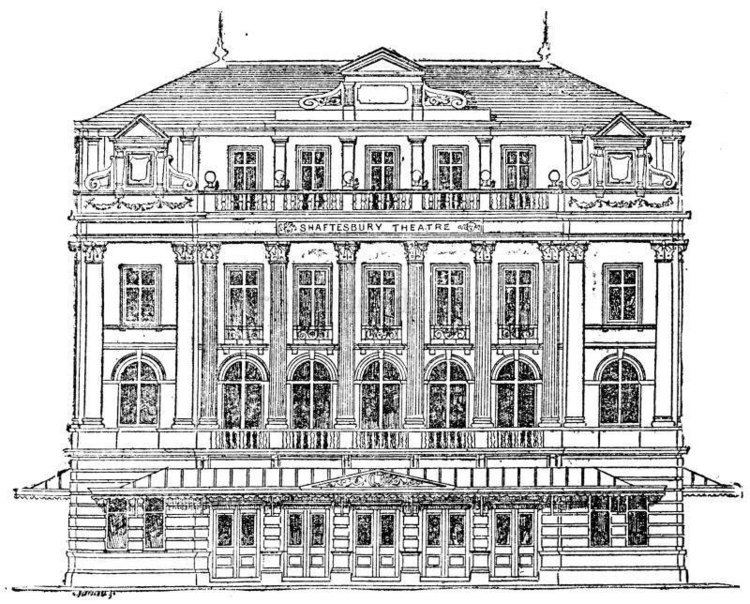Owner John Lancaster Type West End theatre Closed 1941 Capacity 1,196 Architect Charles J. Phipps | Designation Demolished Current use Car park Rebuilt 1888 - 1941 Opened 20 October 1888 | |
 | ||
Addresses Shaftesbury Avenue, City of Westminster, London Similar Greenwich Playhouse, Gaiety Theatre - Isle of Man, Battersea Arts Centre, Arcola Theatre, Rose Theatre - Kingston | ||
The Original Shaftesbury Theatre was a theatre in central London, England, between 1888 and 1941. It was built by John Lancaster for his wife, Ellen Wallis, a well-known Shakespearean actress. The theatre was designed by C. J. Phipps and built by Messrs. Patman and Fotheringham at a cost of £20,000 and opened with a production of As You Like It on 20 October 1888.
The theatre had a stage of 28' 6" square. The capacity was 1,196. It was located on the south side of Shaftesbury Avenue, just east of Gerrard Place.
History
The theatre's first big hit was The Belle of New York produced by the prominent Broadway producer, George W. Lederer, which opened on 12 April 1898 and ran for an extremely successful 697 performances. In 1908–09 H. B. Irving became the lessee and manager of the theatre and presented a successful season of plays. Robert Courtneidge was lessee for most of the early years of the 20th century and produced mostly comic operas and Edwardian musical comedies, including Tom Jones (1907), the record-setting hit The Arcadians (1909), Oh! Oh! Delphine! (1913), The Pearl Girl and many others. In 1914 Basil Rathbone appeared at the Shaftesbury as the Dauphin in Shakespeare's Henry V.
Courtneidge's successors, from 1917 to 1921 were George Grossmith, Jr. and Edward Laurillard. The produced a number of shows, including Arlette by Claude M. Ronald and L. Bouvet (1917); Baby Bunting by Fred Thompson and Worton David (1919); The Great Lover, by Leo Ditrichstein, Frederic Hatton and Fanny Hatton (1920); and Out to Win, by Roland Pertwee and Dion Clayton Calthrop (1921).
In 1941 the theatre was so severely damaged by aerial bombardment that the lease was vacated, and in 1956 the site was appropriated by the London County Council for use as a fire station. It is at present used as a car park and for advertising purposes.
